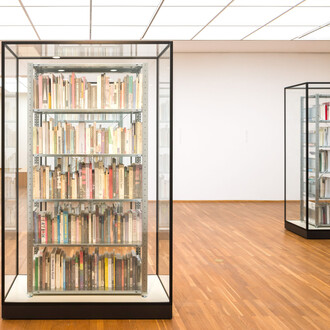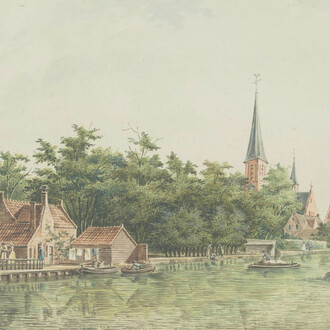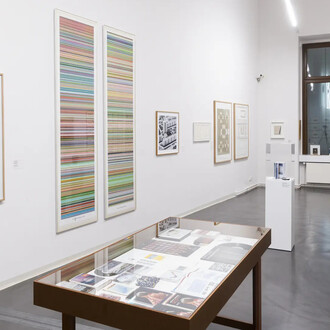In the Helmut Newton Stiftung in the Museum für Fotografie in Berlin the exhibition "Body Performance" presents works by Vanessa Beecroft, Yang Fudong, Inez & Vinoodh, Jürgen Klauke, Robert Longo, Robert Mapplethorpe, Helmut Newton, Barbara Probst, Viviane Sassen, Cindy Sherman, Bernd Uhlig, and Erwin Wurm.
For the first time in Germany, this group exhibition brings together photo sequences whose origins lie in performance art, dance, and other staged events, complemented by a selection of street photography and conceptual photography series. With their common focus on the human body, the images document or interpret performances, which in many cases have also been initiated by the photographers themselves.
The works of the 13 internationally renowned artists are presented throughout the spaces of the Helmut Newton Foundation as if on multiple stages, where visitors can view images of people who, in the act of performance, seem to slip into dream-like, parallel planes of reality. Within this show at the Helmut Newton Foundation, viewers encounter a broad swathe of artistic actions and performances focusing on the human body: people dress up for unconventionally staged fashion shots, they move wildly on streets and rooftops, inhabit rocks and museum spaces, and appear as dancers on and off-stage. Role play and transgressions of physical are revealed by contemporary photographic perspectives on the most diverse visual aspects of body and space, dance and movement. In both their presentation and their reception, these images provokes questions on self-perception, the gaze of the other, identity, and emotion.
Performance is an independent art form, and photography is its constant companion. The close connection between photography and performance, happenings, and action art has existed for many decades and ranges from the Dadaists and Surrealists to Viennese Actionism and the contemporary nude human installations made in the public space by Spencer Tunick.
A relatively unknown work by Helmut Newton is the series of images he made of the dancers of the Ballet de Monte Carlo starting in the 1980s. Instead of depicting them on the classical stage, he photographed them on the streets of Monaco, on the steps behind the famous casino, near the emergency exit of the theatre building, or in the nude at his own home. Newton reinterpreted with these dancers the compositional idea that came to define his work – Naked and Dressed – and once again addressed the link between exhibitionism and voyeurism.
















